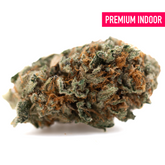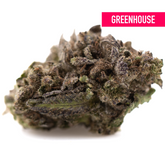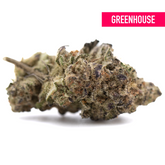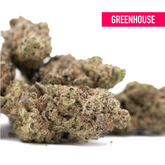Indoor THCA Flower Benefits: Why Controlled Environment Growing Matters
The cannabis cultivation landscape has undergone a revolutionary transformation, with indoor THCA benefits becoming increasingly evident to both cultivators and consumers seeking premium quality products. As the market demands higher standards for potency, consistency, and overall product excellence, controlled environment growing has emerged as the gold standard for producing superior THCA flower that meets and exceeds consumer expectations.
The shift toward indoor cannabis advantages represents more than just a trend—it's a scientific approach to cultivation that prioritizes precision, quality assurance, and optimal plant development. Unlike outdoor growing methods that are subject to environmental variables and seasonal limitations, THCA indoor cultivation offers unprecedented control over every aspect of the growing process, resulting in premium indoor flower that consistently delivers exceptional results.
This comprehensive exploration will examine why controlled environment cultivation has become the preferred method for producing high-quality THCA flower, from the fundamental advantages of environmental control to the long-term benefits for both producers and consumers. Understanding these benefits is crucial for anyone seeking to make informed decisions about THCA flower quality and cultivation methods.

Environmental Control Advantages
Precision Climate Management
Climate control benefits form the foundation of successful indoor THCA cultivation, providing cultivators with the ability to create optimal growing conditions that would be impossible to achieve in outdoor environments. This level of environmental precision directly translates to enhanced product quality and consistency that consumers can rely on.
Temperature Optimization
Temperature management represents one of the most critical aspects of environmental optimization in THCA cultivation. Indoor facilities maintain consistent vegetative temperatures between 70-78°F, ensuring optimal metabolic processes during the plant's growth phase. During flowering, temperatures are precisely controlled between 65-75°F to promote proper cannabinoid development while preventing heat stress that could degrade THCA content.
This temperature stability eliminates the stress factors that outdoor plants face from temperature fluctuations, which can significantly impact cannabinoid production and overall plant health. The elimination of temperature stress allows plants to focus their energy on producing the trichomes and cannabinoids that consumers value most, resulting in higher THCA concentrations and better overall quality.
Optimal enzyme activity maintenance occurs when temperatures remain within these controlled ranges, ensuring that the biochemical processes responsible for THCA production operate at peak efficiency. This metabolic process enhancement is impossible to achieve in outdoor environments where temperature variations can disrupt these delicate biological systems.
Humidity Control Benefits
Humidity management provides another layer of consistency indoor growing that directly impacts final product quality. Stage-specific humidity levels, carefully maintained between 40-70% relative humidity depending on the growth phase, prevent common issues like mold and mildew that can destroy entire crops and compromise consumer safety.
Transpiration rate optimization through humidity control ensures that plants can efficiently uptake nutrients and water, leading to healthier growth and enhanced cannabinoid production. This careful management of vapor pressure deficit allows cultivators to maximize the plant's physiological processes while maintaining optimal growing conditions throughout the entire cultivation cycle.
The potency enhancement achieved through proper humidity control extends beyond just preventing problems—it actively promotes the conditions necessary for maximum THCA production while preserving the delicate terpene profiles that contribute to the overall quality and therapeutic value of the final product.
Air Quality Management
Indoor cultivation facilities implement sophisticated air quality management systems that provide environmental optimization impossible to achieve outdoors. CO2 supplementation capabilities allow for maintaining optimal carbon dioxide levels between 1000-1500 ppm, significantly enhancing photosynthesis and overall plant growth rates.
Air filtration and purification systems ensure that plants are not exposed to airborne contaminants that could affect quality or safety. Consistent air circulation prevents stagnant conditions that could lead to mold or pest issues while maintaining optimal oxygen levels for root health and overall plant vitality.
This comprehensive approach to air quality management represents a significant advantage of THCA indoor cultivation, ensuring that every aspect of the plant's atmospheric environment is optimized for maximum quality and safety.
Light Optimization
Spectrum Control
Modern indoor cultivation facilities utilize full spectrum LED customization to provide plants with precisely the light wavelengths they need at each stage of development. Blue light wavelengths (400-500nm) are optimized during vegetative growth to promote healthy leaf development and strong plant structure, while red light wavelengths (620-750nm) are enhanced during flowering to maximize cannabinoid and terpene production.
UV supplementation for trichome production represents an advanced technique that indoor growers can implement with precision, using controlled UV exposure to stimulate the plant's natural defense mechanisms that result in increased resin production. This controlled stress response is impossible to replicate consistently in outdoor environments where UV levels vary with weather conditions and seasonal changes.
Infrared light for stem elongation control allows cultivators to influence plant structure and morphology, resulting in more efficient space utilization and better overall plant architecture that supports maximum flower production.
Photoperiod Precision
The ability to maintain exact 18/6 vegetative lighting schedules and precise 12/12 flowering triggers eliminates the variability that outdoor plants experience from changing day lengths and weather conditions. This consistency indoor growing ensures that plants transition between growth phases at the optimal time for maximum THCA production.
Elimination of light pollution, a common problem in outdoor cultivation, ensures that plants receive the proper dark periods necessary for healthy development and proper flowering response. Dark period protection is absolute in indoor facilities, something that cannot be guaranteed in outdoor environments where stray light sources can disrupt plant development.
The maintenance of consistent daily light integral (DLI) values ensures that plants receive exactly the amount of light energy they need for optimal photosynthesis and growth, resulting in premium indoor flower that consistently meets quality standards.

Quality and Potency Benefits
THCA Concentration Enhancement
Potency enhancement through controlled environment cultivation represents one of the most significant advantages of indoor growing methods. The ability to manage stress factors precisely allows cultivators to apply controlled stress techniques that enhance resin production while eliminating negative stressors that could damage the plant or reduce cannabinoid content.
Controlled stress for resin production includes techniques like strategic light stress, temperature fluctuations, and nutrient management that trigger the plant's natural defense mechanisms without causing harm. This approach results in enhanced cannabinoid biosynthesis and higher THCA concentrations than would typically be possible in uncontrolled outdoor environments.
The elimination of negative stressors such as extreme weather, pests, and environmental pollutants allows plants to focus their energy on producing the compounds that consumers value most. This optimal plant health maintenance throughout the entire growing cycle results in consistent potency across harvests, providing consumers with reliable products they can trust.
Harvest Timing Precision
Indoor cultivation allows for precise trichome development monitoring using controlled lighting and magnification equipment. This enables cultivators to identify the exact peak THCA content timing for each individual plant, ensuring that harvest occurs at the optimal moment for maximum potency.
Degradation prevention through controlled environmental conditions means that once peak THCA levels are reached, the indoor environment can be adjusted to maintain those levels until harvest. This quality assurance optimization window is much broader in controlled environments, giving cultivators flexibility in harvest scheduling without sacrificing quality.
Terpene Profile Optimization
Terpene preservation represents another crucial advantage of controlled environment growing. Temperature regulation prevents the volatilization of delicate terpenes that contribute to flavor, aroma, and therapeutic effects. Indoor facilities can maintain the precise temperature ranges that preserve these valuable compounds throughout the growing and harvest process.
Humidity control preventing volatilization ensures that water-sensitive terpenes are not lost during cultivation. The ability to manage environmental conditions precisely allows for the development of complex terpene profiles that would be impossible to achieve in outdoor environments where weather conditions constantly fluctuate.
Light spectrum effects on terpene synthesis can be carefully controlled in indoor facilities, with specific wavelengths promoted during different phases of development to enhance particular terpene compounds. This level of precision allows cultivators to develop signature terpene profiles that distinguish their products in the marketplace.
Physical Quality Characteristics
Bud Structure Optimization
Indoor cultivation produces dense, tight bud formation through careful environmental control and plant training techniques. Proper calyx development is enhanced by consistent growing conditions that allow the plant to focus energy on flower production rather than defending against environmental stresses.
The reduced stem and leaf ratio achieved through controlled growing conditions results in a higher percentage of consumable flower material, providing better value for consumers while enhancing the overall bag appeal and market presentation of the product.
Trichome Production
Maximum trichome density is achieved through the precise environmental control possible in indoor facilities. The combination of optimal temperature, humidity, light spectrum, and nutrient management creates conditions that maximize the plant's resin production capabilities.
Proper trichome development under controlled conditions results in crystal clarity and potency that enhances both visual appeal and extract production suitability, making indoor-grown flower valuable for both direct consumption and processing into concentrates.

Consistency and Reliability
Batch-to-Batch Uniformity
Quality assurance through standardized growing conditions ensures that every harvest meets the same high standards that consumers expect. Repeatable environmental parameters, consistent input applications, and standardized processing protocols create a systematic approach to cultivation that eliminates the variability inherent in outdoor growing.
This systematic approach to THCA indoor cultivation allows cultivators to develop quality assurance systems that can predict and deliver consistent results, building brand reliability and customer trust over time.
Year-Round Production
One of the most significant indoor cannabis advantages is the ability to maintain continuous production cycles regardless of external weather conditions or seasonal changes. This seasonal independence provides multiple benefits that extend far beyond simple convenience.
Year-round cultivation capabilities allow facilities to maintain continuous harvest schedules, ensuring consistent product availability for consumers and steady revenue streams for producers. This supply chain reliability is crucial in meeting market demand and maintaining competitive positioning in the cannabis industry.
Market demand responsiveness becomes possible when cultivation is not limited by growing seasons. Indoor facilities can adjust production schedules and strain selection based on market trends and consumer preferences, rather than being constrained by outdoor growing seasons and weather patterns.
Contamination Prevention
Pest and Disease Control
Indoor cultivation provides physical barrier protection that completely eliminates many of the pest and disease pressures that outdoor crops face. Pest prevention through environmental control represents a significant advantage in terms of both product quality and production reliability.
Integrated pest management (IPM) systems can be implemented more effectively in controlled environments where monitoring and treatment options are more diverse and precise. Sterile environment maintenance is possible through controlled access and air filtration systems that prevent the introduction of harmful organisms.
Early detection systems for pests and diseases are more effective in indoor environments where regular monitoring is easier and environmental conditions are stable. When problems do arise, organic treatment options can be applied more precisely and effectively than in outdoor environments.
Chemical Contamination Avoidance
Filtered air and water systems ensure that plants are not exposed to airborne pollutants, industrial chemicals, or other contaminants that could affect product safety or quality. This level of input control is impossible to achieve in outdoor cultivation where environmental contamination from surrounding areas cannot be controlled.
Controlled input materials, including nutrients, growing media, and water sources, ensure that no unwanted chemicals or contaminants enter the cultivation system. This pesticide-free cultivation approach provides consumers with clean products that meet the highest safety standards.
Heavy metal prevention through controlled growing media and nutrient sources ensures that final products meet all regulatory standards and consumer safety expectations. This clean product guarantee is a significant advantage of indoor cannabis advantages.
Processing and Handling Benefits
Harvest Optimization
Environmental optimization extends into the harvest phase, where indoor facilities can maintain optimal processing conditions regardless of external weather. Laboratory-monitored harvest windows ensure that each plant is harvested at peak potency and quality.
Weather-independent scheduling allows cultivators to plan harvest activities based on plant readiness rather than weather forecasts, ensuring that optimal processing conditions are maintained throughout the harvest period. This timing precision directly translates to better product quality and more efficient operations.
Post-Harvest Processing
Controlled Drying Conditions
The ability to maintain optimal temperature and humidity during the drying process is crucial for preserving cannabinoid and terpene content while preventing mold and other quality issues. Indoor facilities can provide consistent air circulation and contamination prevention throughout the drying process.
Quality preservation during drying is enhanced by the precise environmental control possible in indoor facilities, where temperature and humidity can be adjusted gradually to optimize the drying process without shocking the plant material or causing quality degradation.
Curing Environment Control
Precise humidity management during the curing process allows for the slow, controlled breakdown of chlorophyll and other compounds that can affect flavor and smoothness. Temperature stability during curing ensures that this process occurs at the optimal rate for maximum quality development.
Air quality maintenance during curing prevents contamination and ensures that the delicate biochemical processes that occur during curing can proceed without interference. This controlled approach to curing results in premium indoor flower with superior flavor, aroma, and overall quality characteristics.

Market Advantages
Premium Market Positioning
Consumer perception increasingly associates indoor cultivation with higher quality products, allowing producers to justify premium pricing for their premium indoor flower. This quality association creates brand differentiation opportunities that help producers stand out in an increasingly competitive marketplace.
Market segment targeting becomes more precise when producers can guarantee consistent quality and characteristics through controlled cultivation methods. Customer loyalty development is enhanced when consumers can rely on consistent product quality from harvest to harvest.
Competitive Advantages
Consistent supply reliability gives indoor producers significant competitive advantages over outdoor cultivators who are subject to weather-related crop losses and seasonal production limitations. Superior product quality achieved through controlled environment growing methods helps protect market share and enhance brand reputation.
Customer satisfaction improvement through consistent quality and availability helps build long-term business relationships and brand loyalty that translate to sustained business success.
Regulatory Compliance
Testing and Standards
Controlled cultivation methods produce more consistent laboratory results, making it easier to predict and meet regulatory standards for potency, contaminants, and other quality measures. This consistency indoor growing simplifies compliance with quality standards and regulatory requirements.
Traceability and documentation are easier to maintain in controlled environments where all inputs and environmental conditions are monitored and recorded. This comprehensive record-keeping supports risk management and legal requirement fulfillment.
Economic Benefits
Efficiency Optimization
Resource Utilization
Water efficiency maximization through controlled irrigation systems reduces waste and environmental impact while ensuring optimal plant hydration. Nutrient optimization through precise feeding programs reduces input costs while maximizing plant performance and product quality.
Energy efficiency improvements through advanced lighting and climate control systems help offset the higher initial infrastructure costs of indoor cultivation. Labor productivity enhancement through optimized workflows and controlled environments reduces operating costs over time.
Waste reduction strategies, including recycling of growing media and nutrients, improve the overall economic and environmental sustainability of THCA indoor cultivation operations.
Risk Mitigation
Crop Loss Prevention
Weather damage elimination represents one of the most significant economic advantages of indoor cultivation. The ability to protect crops from storms, extreme temperatures, drought, and other weather-related disasters provides significant economic benefits and reduces the need for crop insurance.
Pest prevention and disease control management in controlled environments reduce the risk of crop losses that can devastate outdoor operations. Quality assurance systems help prevent the production of substandard products that could result in recalls or market rejection.
Long-term Sustainability
Technology advancement integration is easier in indoor facilities where new equipment and systems can be installed and tested without disrupting outdoor growing seasons. This adaptability ensures that operations can evolve with advancing technology and changing market demands.
Scalability and expansion potential are greater with indoor cultivation, where additional growing space can be added without the land acquisition challenges faced by outdoor operations. Environmental optimization control through precise resource management and waste reduction supports sustainable business practices.
Resource conservation practices, including water recycling and energy efficiency measures, reduce operating costs while supporting environmental sustainability goals. Future-proofing operations through controlled environments ensures long-term viability regardless of changing climate conditions or regulatory requirements.
Conclusion
The advantages of controlled environment growing for THCA flower production extend far beyond simple convenience or weather protection. The comprehensive benefits of THCA indoor cultivation represent a fundamental shift toward scientific, precision-based cultivation methods that consistently deliver premium indoor flower quality that meets the evolving demands of today's cannabis consumers.
From the precise climate control benefits that optimize cannabinoid and terpene production to the environmental optimization that ensures consistent quality and safety, indoor cultivation has established itself as the gold standard for premium THCA flower production. The investment in controlled environment infrastructure is justified by the superior product quality, consistency, and reliability that these systems provide.
Consumer benefit realization through consistent access to high-quality, safe, and potent THCA flower products demonstrates the value of controlled cultivation methods. As the industry continues to mature, indoor cannabis advantages are establishing the standards by which all cannabis products are measured.
The future direction of cannabis cultivation clearly favors controlled environment methods that can deliver the quality, consistency, and safety that consumers demand. For those seeking the highest quality THCA flower products, understanding these cultivation advantages is essential for making informed purchasing decisions.
For consumers ready to experience the benefits of premium indoor THCA flower cultivation, explore the carefully curated selection of controlled environment products available at Hemp Flower's THCA collection, where quality meets consistency in every harvest.
Frequently Asked Questions
Q: What makes indoor THCA flower superior to outdoor grown products? A: Indoor THCA benefits include consistent potency, enhanced terpene preservation, elimination of weather-related stress, pest prevention, and precise environmental control that results in higher quality, safer products with predictable characteristics.
Q: How does controlled environment growing affect THCA potency? A: Controlled environment growing allows for optimal timing of harvest, prevention of cannabinoid degradation, elimination of stress factors that reduce potency, and precise management of conditions that maximize THCA production throughout the plant's lifecycle.
Q: Are indoor grown THCA flowers more expensive than outdoor alternatives? A: While premium indoor flower typically commands higher prices due to increased production costs, the superior quality, consistency, and safety justify the investment for consumers seeking reliable, potent products.
Q: Can indoor cultivation produce THCA flower year-round? A: Yes, year-round cultivation is one of the key indoor cannabis advantages, allowing for continuous production cycles independent of seasonal changes or weather conditions, ensuring consistent product availability.
Q: How does terpene preservation differ between indoor and outdoor cultivation? A: Terpene preservation in controlled environments is superior due to precise temperature and humidity control that prevents volatilization, optimal harvest timing, and protection from environmental factors that can degrade these valuable aromatic compounds.
Q: What quality assurance measures are possible with indoor THCA cultivation? A: Quality assurance in indoor facilities includes standardized environmental conditions, consistent input materials, precise monitoring systems, contamination prevention, and batch-to-batch uniformity that ensures reliable product characteristics.
Q: How does pest prevention in indoor cultivation benefit consumers? A: Pest prevention through controlled environments eliminates the need for pesticides, reduces contamination risks, prevents crop losses that could affect availability, and ensures cleaner, safer products for consumer use.
Q: What are the long-term benefits of choosing indoor grown THCA flower? A: Long-term benefits include consistent product availability, reliable quality standards, enhanced safety profiles, sustainable cultivation practices, and support for agricultural methods that prioritize consumer health and product excellence.











